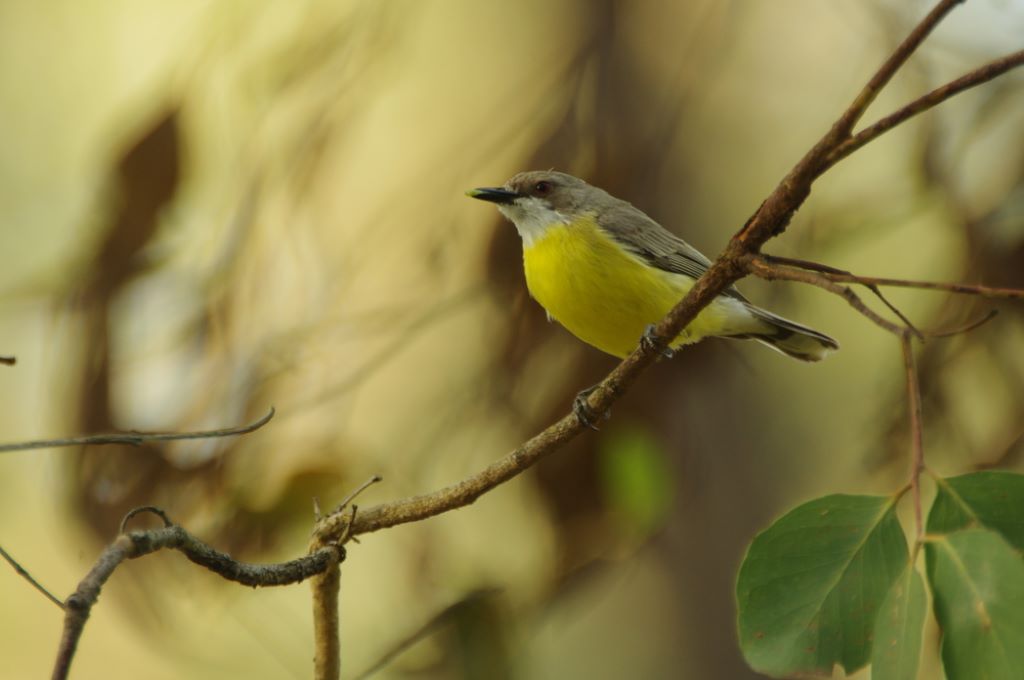There are few sounds so intrinsically linked with Australia as the chortle of a magpie first thing in the morning. The call is so distinctive that most Australians would have been able to tell you which species was making the call before they had reached school age. Yet, despite this early foray into call recognition, few people add more than a handful of other species to the list of birds that they can recognise by call. This is a shame because a good ear can turn an average day of birdwatching into a great day of birding. Birding is the term most serious birdwatchers use to describe their hobby. I think this is a fitting modification because it celebrates how much other aspects besides the visual experience can add to your enjoyment.
I first saw the full potential of call recognition when volunteering with ‘gun’ birder, Dean Ingwersen. Dean is the Regent Honeyeater Recovery Coordinator at BirdLife Australia. His role requires him to spend a lot of time in woodlands across the south-east of the country. This means he is often listening to birds calling. Not surprisingly, Dean’s ears were finely tuned to the call of regent honeyeaters. More impressively, he was also able to tell when other seldom-seen species such as varied sittellas and black-chinned honeyeaters were nearby, simply by distinguishing their calls from the cacophony of noisy friarbirds and red wattlebirds. My birding changed from that day onwards.

I made a concerted effort to learn the characteristic calls of as many of the local species as possible. As it turned out, this was soon to be of great benefit to me when I began collecting bird survey data for my university honours project and then for subsequent research projects in a professional capacity. Being involved in scientific bird surveys has further highlighted the value of a good ear. It is only when tasked with counting every single bird in each survey site and having a tangible record of this on paper that you realise just how many birds you don’t see. Over 70% of the birds I record in a woodland bird survey I have not seen at all. Many of those that I do see I have heard first and know where I should be looking to see them.
I use a few techniques to aid my call recognition. The call of some birds resembles their name. For instance, the common two syllable phrase in the call of a weebill sounds as if it is saying ‘weebill’. Likewise, the slurred call of an olive-backed oriole sounds distinctly like ‘oriole’. However, not all bird sounds are so convenient. There are other mnemonics that I use, though. A call saying ‘sweet pretty creature’ is the familiar sound of a willie wagtail, whilst a stubble quail call resembles the phrase ‘poppy wheat’. But not all calls I remember by word association: The call of a painted honeyeater I remember as sounding like a rusty seesaw and a spotted night-jar I liken to an air-powered toy helicopter (don’t believe me? Well, listen here).
The best way to learn bird calls is by going out birding with someone who already knows their stuff; ask them their secrets for remembering the calls of different species. After a description from a fellow birder, the call of white-throated gerygone is cemented in my mind as sounding like a falling leaf, whereas a white-naped honeyeater sounds vaguely like the sound of an ice-cream being slurped (I say vaguely because I don’t necessarily agree with that description). Regardless, I am thankful that the experienced birder shared their mnemonics with me – now I know that a white-naped honeyeater sounds not quite like the slurping of an ice-cream.
Listening out for calls will also mean your ears are tuned in to other noises as well. The sound of crunching bark may signal the presence of a crested shrike-tit. Similar crunching noises can betray the presence of a large parrot, such as a gang-gang cockatoo, sitting otherwise inconspicuously while crushing woody seed pods.

At the beginning, the many varied calls will seem overwhelming, but that is normal. I still find myself baffled even by common birds giving strange call variations or simply because of a mental block. There is no substitute for spending time outdoors listening to the real thing but there are a number of resources that can help. Apps for your phone such as Museum Victoria’s free Field Guide to Victorian Fauna and electronic versions of the Morecombe, and Pizzey and Knight field guides each come with a catalogue of call recordings. Similarly, websites such as the bird finder section of the Birds in Backyards website and the xeno-canto database have useful sound recordings. It takes patience and requires continued practice to maintain, but once your birding experience has been enhanced by your knowledge of bird calls, you’ll never look back – you’ll listen back instead!
Banner image of the white-throated gerygone, this bird has one of the most pleasant calls in the Victorian bush. Image is courtesy of Rowan Mott.


Leave a Reply